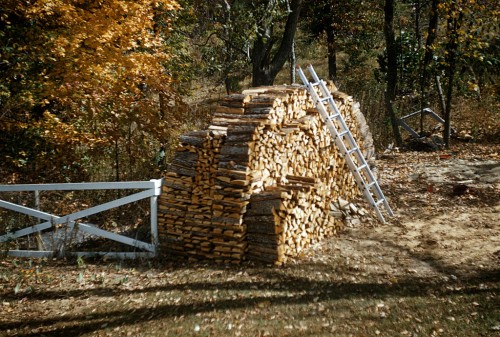 Like most males of a certain age, I have an aversion to reading directions. HAD I picked up the Manual of Manual Labor before I started cutting firewood, I probably would have seen Rule One: Avoid it.
Like most males of a certain age, I have an aversion to reading directions. HAD I picked up the Manual of Manual Labor before I started cutting firewood, I probably would have seen Rule One: Avoid it.
See, I mentioned before that I can usually pull out my Medicare Card when I’m with Brother Mark or Sons Matt and Adam to get out of work, but I suspect that when your mother is 91 and counting, her card is senior to mine.
Master of the chain saw
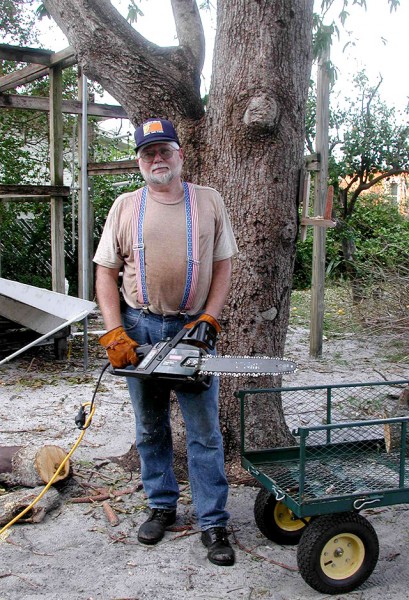 So, to back up: we had a windstorm blow through Cape that took down some big branches off a maple tree on the west side of the house. I bought an electric chain saw (I get along with gas saws just about as well as I coexist with plumbing) and made short work of cutting it up into lengths we could put in the fireplace. [This was me doing damage to the trees and limbs we had blow down in our yard in West Palm Beach during Hurricane Frances in 2004. I look much the same today. Trees tremble around me.]
So, to back up: we had a windstorm blow through Cape that took down some big branches off a maple tree on the west side of the house. I bought an electric chain saw (I get along with gas saws just about as well as I coexist with plumbing) and made short work of cutting it up into lengths we could put in the fireplace. [This was me doing damage to the trees and limbs we had blow down in our yard in West Palm Beach during Hurricane Frances in 2004. I look much the same today. Trees tremble around me.]
“Just in case”
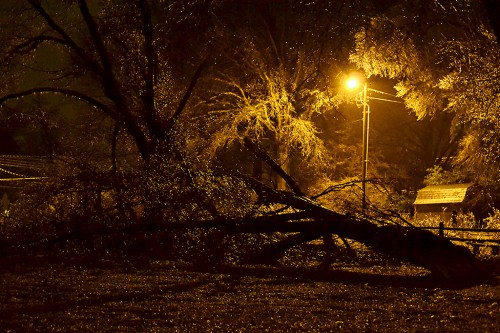 When the ice storm was predicted, we decided (Mother decided, waving her Medicare Card), that we should bring in extra firewood and kindling “just in case.”
When the ice storm was predicted, we decided (Mother decided, waving her Medicare Card), that we should bring in extra firewood and kindling “just in case.”
This year’s wood must have been dryer than usual because there was very little left on the pile after filling the garden cart and two storage bins in the basement. We decided (Mother decided, waving her Medicare Card) to harvest whatever dead wood there was in the yard “just in case.”
I had been eying a dead snag on the east side of the yard for some time. It looked big enough to provide a lot of wood, but small enough that I could handle it with my 16″saw.
Boy Scouts used “squaw wood”
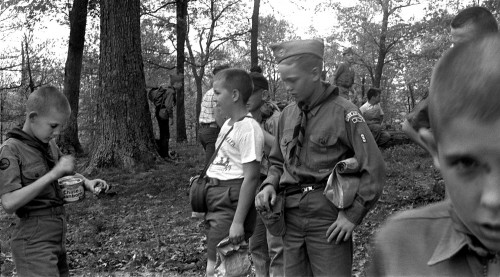 In my Boy Scout days, we didn’t get to cut down many trees at camp. Like NO trees at camp. We were told to gather “squaw wood,” defined in the Scout Handbook as “the kind Indian women used to collect by simply breaking it off.” You probably won’t find that phrase used in today’s Handbook. Anyway, after I took off to college, Dad came up with a great money-making scheme for my brothers’ Order of the Arrow Chapter: he had woods that needed to be cleared for roads; he had trucks; he had chainsaws and he had parents of boys 14 to 18-years-old who didn’t see anything wrong with putting that combination together to cut firewood.
In my Boy Scout days, we didn’t get to cut down many trees at camp. Like NO trees at camp. We were told to gather “squaw wood,” defined in the Scout Handbook as “the kind Indian women used to collect by simply breaking it off.” You probably won’t find that phrase used in today’s Handbook. Anyway, after I took off to college, Dad came up with a great money-making scheme for my brothers’ Order of the Arrow Chapter: he had woods that needed to be cleared for roads; he had trucks; he had chainsaws and he had parents of boys 14 to 18-years-old who didn’t see anything wrong with putting that combination together to cut firewood.
So far as I know, Dad always came home with the same number of boys he started with; the boys got to do a “man’s work” with dangerous tools, and people needing firewood got a great deal. Of course, that’s in the days when chainsaws were considered tools, not killing machines wielded by hockey-mask-wearing crazy guys in slasher movies.
I’m an experienced tree trimmer
Despite my lack of Boy Scout experience, I HAVE managed to down a tree or two. Here’s an account of one of those adventures.
OK, I’ll confess, that’s my tree, but that’s not me IN my tree. I could have done that if I had wanted to, though.
I accounted for old fence wire
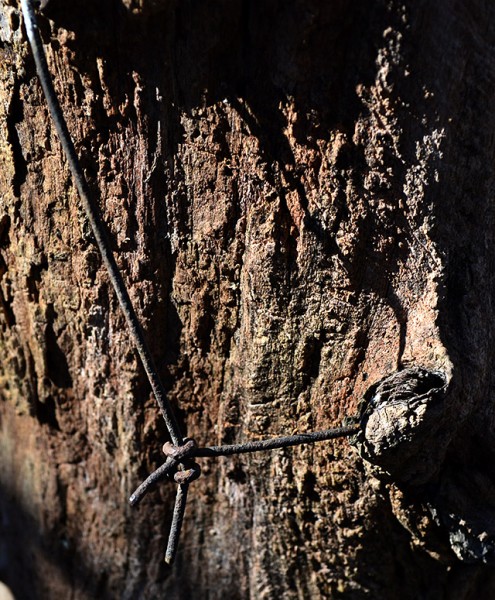 I sized up the tree, decided I wanted it to fall to the southwest into the back yard where I could cut it up with a minimum of hauling. The trees on two sides of our yard had been used as fence posts going back probably 70 years or more. The ones on the east side were pretty much rusted away by the time we moved in 57 years ago. Still, I knew I’d have to watch out for nails and fence wire. I started my notch cut about four feet above the ground, above the visible wire.
I sized up the tree, decided I wanted it to fall to the southwest into the back yard where I could cut it up with a minimum of hauling. The trees on two sides of our yard had been used as fence posts going back probably 70 years or more. The ones on the east side were pretty much rusted away by the time we moved in 57 years ago. Still, I knew I’d have to watch out for nails and fence wire. I started my notch cut about four feet above the ground, above the visible wire.
All went well for about 23 seconds, then the saw bucked a few times and I watched sparks fly out of my cut. Not ALL of the wire was visible. I changed my angle, cut about 17 seconds, with the same result. The notch wasn’t as big as I would like, but it’ll do, I thought.
Nails must have been cheap
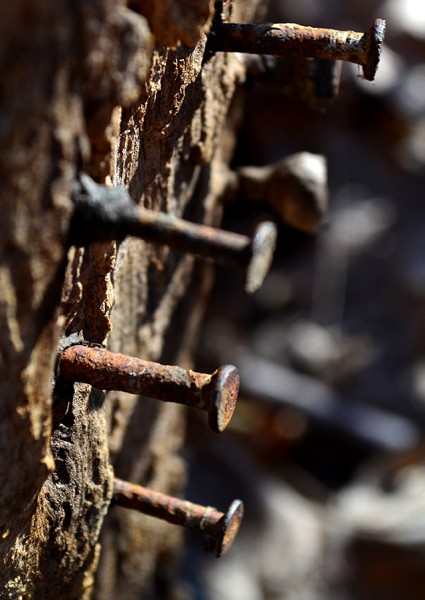 I made the top angle cut, pretending not to notice the sparks, then switched to the back of the tree to make the hinge cut. MORE sparks. If the fence wire I could SEE was 70 years old, then there must have been another fence hanging off that tree 90 years ago, because it was at least 1-1/2 inches under the surface.
I made the top angle cut, pretending not to notice the sparks, then switched to the back of the tree to make the hinge cut. MORE sparks. If the fence wire I could SEE was 70 years old, then there must have been another fence hanging off that tree 90 years ago, because it was at least 1-1/2 inches under the surface.
I had other stuff to cut, so I didn’t want to kill the saw blade. “I’ll drive wedges into the hinge cut,” I thought. Shouldn’t take much to get the tree to decide gravity should take over. Three big wedges and a 6-pound sledge earned me a slight cracking sound. From the way the tree hadn’t changed position, I surmised the cracking sound was coming from my back.
Earlier in the procedure, I worked a rope up the tree as high as I could, figuring that I could “encourage” the tree to fall in that direction if I got it rocking. Unfortunately, the tree was leaning against a dead branch from another tree about 30 feet in the air. It had been there long enough that it had cut a deep groove in the branch. It wouldn’t rock.
Saw blade slick as dental floss
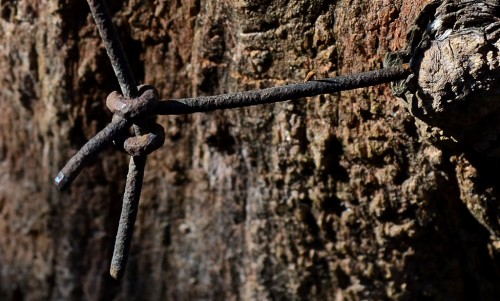 Finally, I decided that I had had enough. I didn’t care if I made the saw blade as slick as a piece of dental floss: I was tired of swinging that sledge. Ignoring the fireworks show going on, I cut all the way through the hinge to the notch. I could see light through it. The tree was ignoring the law of gravity.
Finally, I decided that I had had enough. I didn’t care if I made the saw blade as slick as a piece of dental floss: I was tired of swinging that sledge. Ignoring the fireworks show going on, I cut all the way through the hinge to the notch. I could see light through it. The tree was ignoring the law of gravity.
Where are the pictures of all this? Well, Mother was standing by keeping a close eye on the proceedings. She had a whip in one hand to encourage me to keep working, and a cell phone in the other so she could dial 9-1-1. Her camera was in her pocket. She hadn’t planned to pull it out unless there was blood, at which point she would take a picture and faint dead away. When she woke up, THEN she would dial 9-1-1.
Use a longer rope
I pulled on the rope. With a loud crack, the tree starting falling in my direction. Hint: if your tree is 30 feet tall, use at least a 40-foot rope, not a 25-foot one. “I never knew you could run so fast,” Mother observed, having dropped the whip and picked up the camera.
Amazing what you can do with the right encouragement.
Well, the story isn’t over. While taking down the tree, I noticed a dead one that had fallen just down the slope. Since I already had the saw and the electric cord down there, I elected to cut it up, too. That involved cutting a piece of wood, throwing up the slope as far as I could, then picking up it and throwing it the rest of the way to the yard. Keep track of those steps. It’ll become important later.
Was farmer keeping out bats?
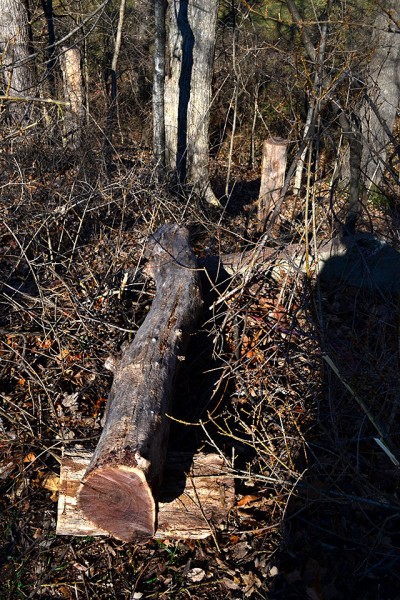 Now it was time to cut up the primary tree. I started at the top, slender, end. It cut about as well as you would expect a piece of dental floss to cut. It didn’t cut so much as worry the wood to death.
Now it was time to cut up the primary tree. I started at the top, slender, end. It cut about as well as you would expect a piece of dental floss to cut. It didn’t cut so much as worry the wood to death.
Then, about four feet from the butt end, which would have been about eight feet above the ground, I hit fence wire again. I don’t know what the farmer was trying to keep in or keep out, but it had to have been bats or giraffes. Mother had gone to get her hair done, so I took this opportunity to throw the four-foot snag waaaay down the hill where I hoped she wouldn’t notice it.
THIS is the cart
 Our back yard has two levels. I pulled the garden cart down to pick up the wood from down the hill. That’s the wood that I had already picked up at least twice. I put it into the cart, then pulled the cart up a 40% grade to the main yard, where I put in the big stuff from the primary tree. Some other large branches had fallen on the east side of the yard, so I cut them up, loaded the cart and headed toward the basement. The only problem was that I couldn’t steer the cart: a nut on the bolt that attached the steering handle to the cart had evidently worked loose. The only solution was to unload the cart so I could replace the bolt and nut.
Our back yard has two levels. I pulled the garden cart down to pick up the wood from down the hill. That’s the wood that I had already picked up at least twice. I put it into the cart, then pulled the cart up a 40% grade to the main yard, where I put in the big stuff from the primary tree. Some other large branches had fallen on the east side of the yard, so I cut them up, loaded the cart and headed toward the basement. The only problem was that I couldn’t steer the cart: a nut on the bolt that attached the steering handle to the cart had evidently worked loose. The only solution was to unload the cart so I could replace the bolt and nut.
I’ve touched it five-plus times
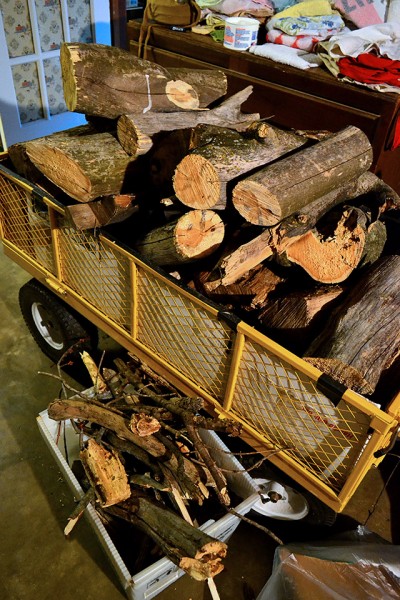 That meant that I had to touch those pieces a fourth time. After I got the cart fixed, it dawned on me that it wouldn’t make much sense to haul an empty cart inside, so I loaded it back up. We’re now up to a minimum of five touches per piece of wood. Much of the wood went into bins on the left and right side of the fireplace. That brings us to six or seven touches.
That meant that I had to touch those pieces a fourth time. After I got the cart fixed, it dawned on me that it wouldn’t make much sense to haul an empty cart inside, so I loaded it back up. We’re now up to a minimum of five touches per piece of wood. Much of the wood went into bins on the left and right side of the fireplace. That brings us to six or seven touches.
I’m tempted to NAME the firewood
 Throwing it into the fireplace will be the eighth time (minimum) I’ve moved it. The final step will be carrying out the ashes. I’ve seen each piece of wood so many times I’m tempted to name it.
Throwing it into the fireplace will be the eighth time (minimum) I’ve moved it. The final step will be carrying out the ashes. I’ve seen each piece of wood so many times I’m tempted to name it.

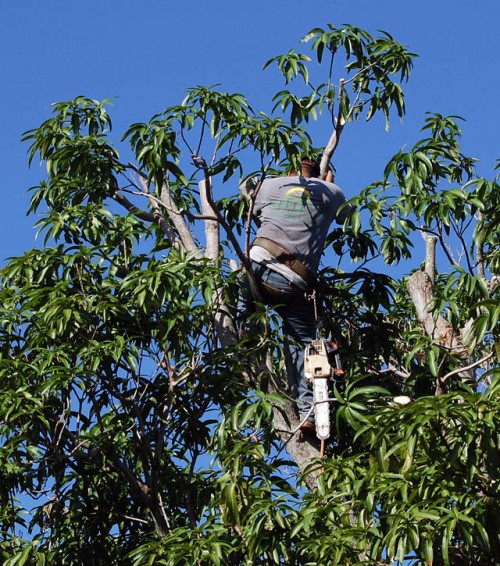
Try doing that like my husband and I did for 35 years….owning a tree service. Whoopie!!
I believe that as member of Troop 8, I have cut, split and handled enough firewood to hold a lifetime “No Firewood Handling” card. Thanks to your dad, firewood production was an annual occurance within the troop for many years.
Holy tree cutting! What a story and great photos to depict the events. I am trying to picture you and your mother dueling with the medicare cards. I do believe she has an edge on you.
Frony shot a picture of the largest cypress tree in Missouri in 1946. This was unknown to me when I took a picture of the same tree in 1975 after lightning struck and killed it. It stood for 550 years. See both photos in this blog, but click a link to see mine.
http://www.semissourian.com/blogs/flynch/entry/39981
We burn wood for heating and I’m the source of it all. I can relate to naming the wood. After handling each piece you get to know the irregulars and those that were especially stubborn to split. Great exercise, cutting, splitting, hauling and stacking.Headed out for another session this morning.
BRAVO ZULU. Great photos and story. However, I your advanced age, you should have a hard hat, back support and steel-toed boots. I may keep you from using that Medicare card.
The red end cut would indicate an eastern red cedar, perhaps … they make great long lasting fence posts, dead or alive! Not of much value to woodpeckers, but other dead species are. Save your back and let ’em stand and come down the natural way (unless, of course, that way would be on your roof!).
I thought it was a cedar, but the bark and anything except the red wood that would give a clue was gone.
We have left several dead trees standing that have lots of woodpecker holes in them.
WOW! This a epic novel of tree cutting, Medicare card waving, firewood burning extravaganza! I like this style of blogging.